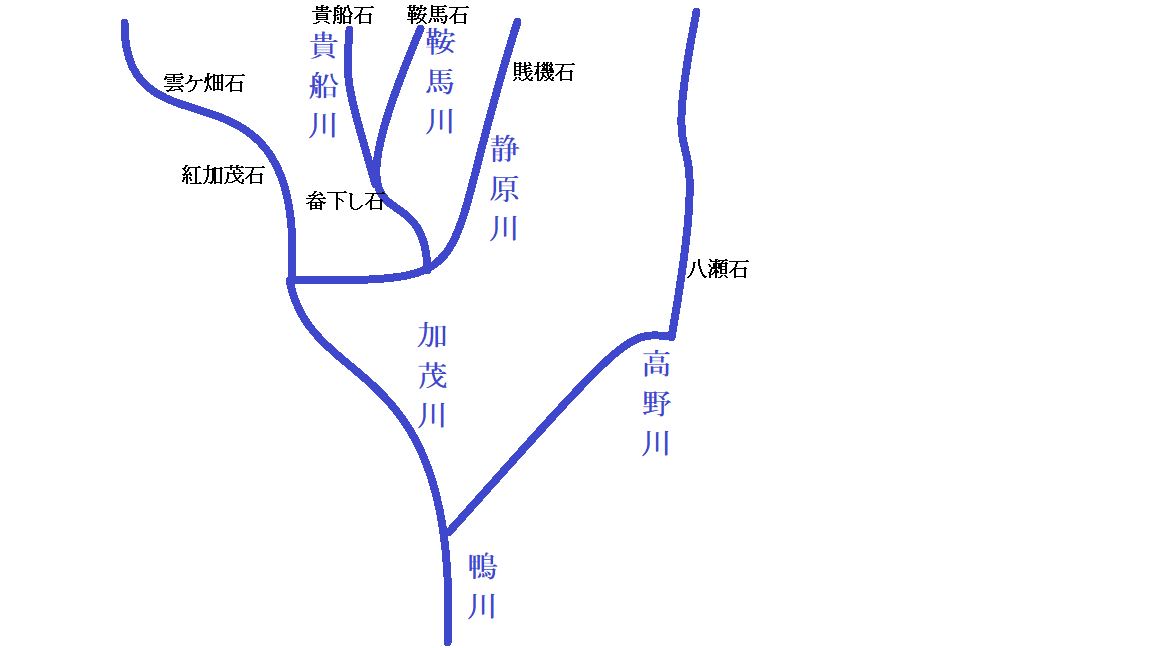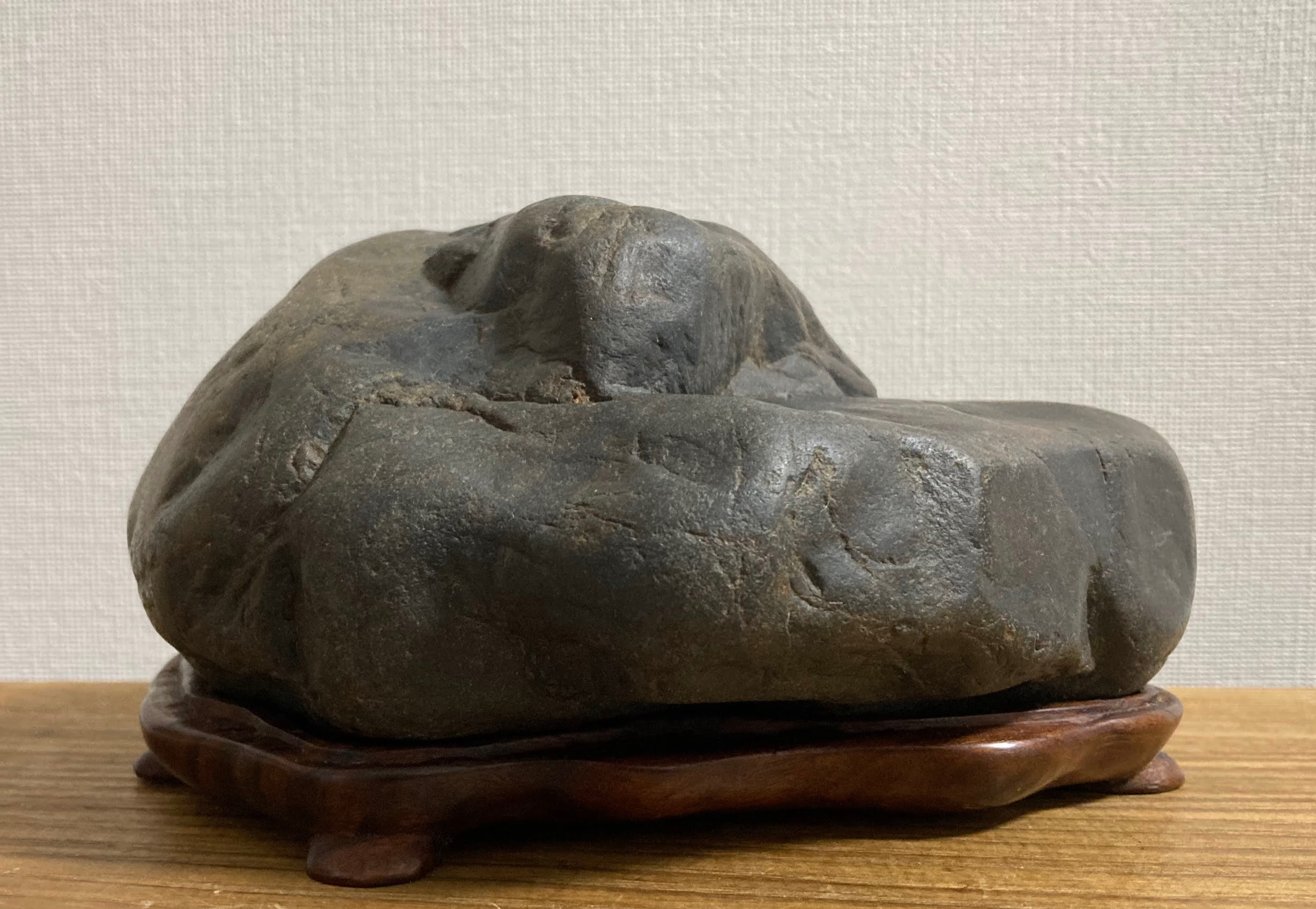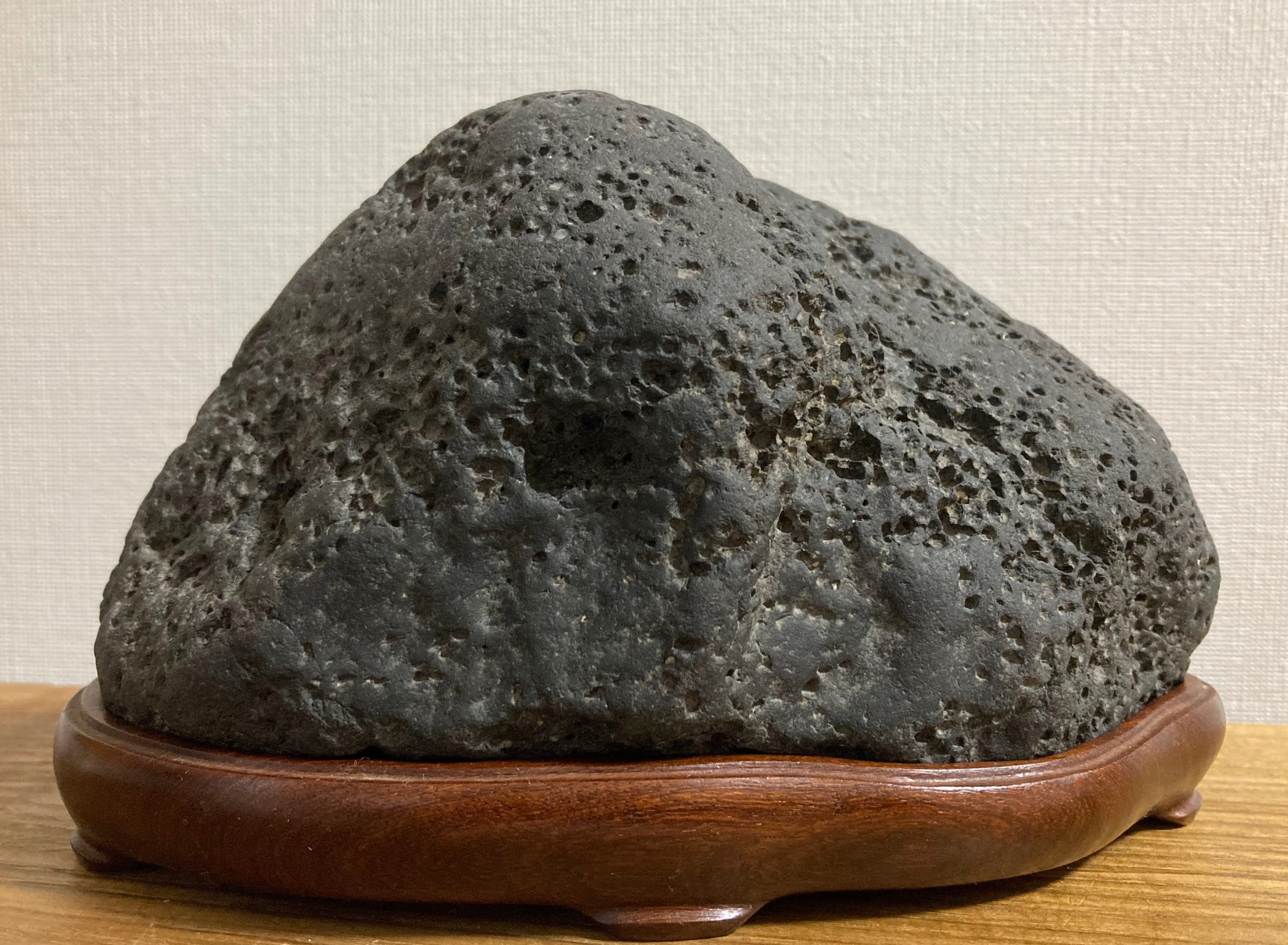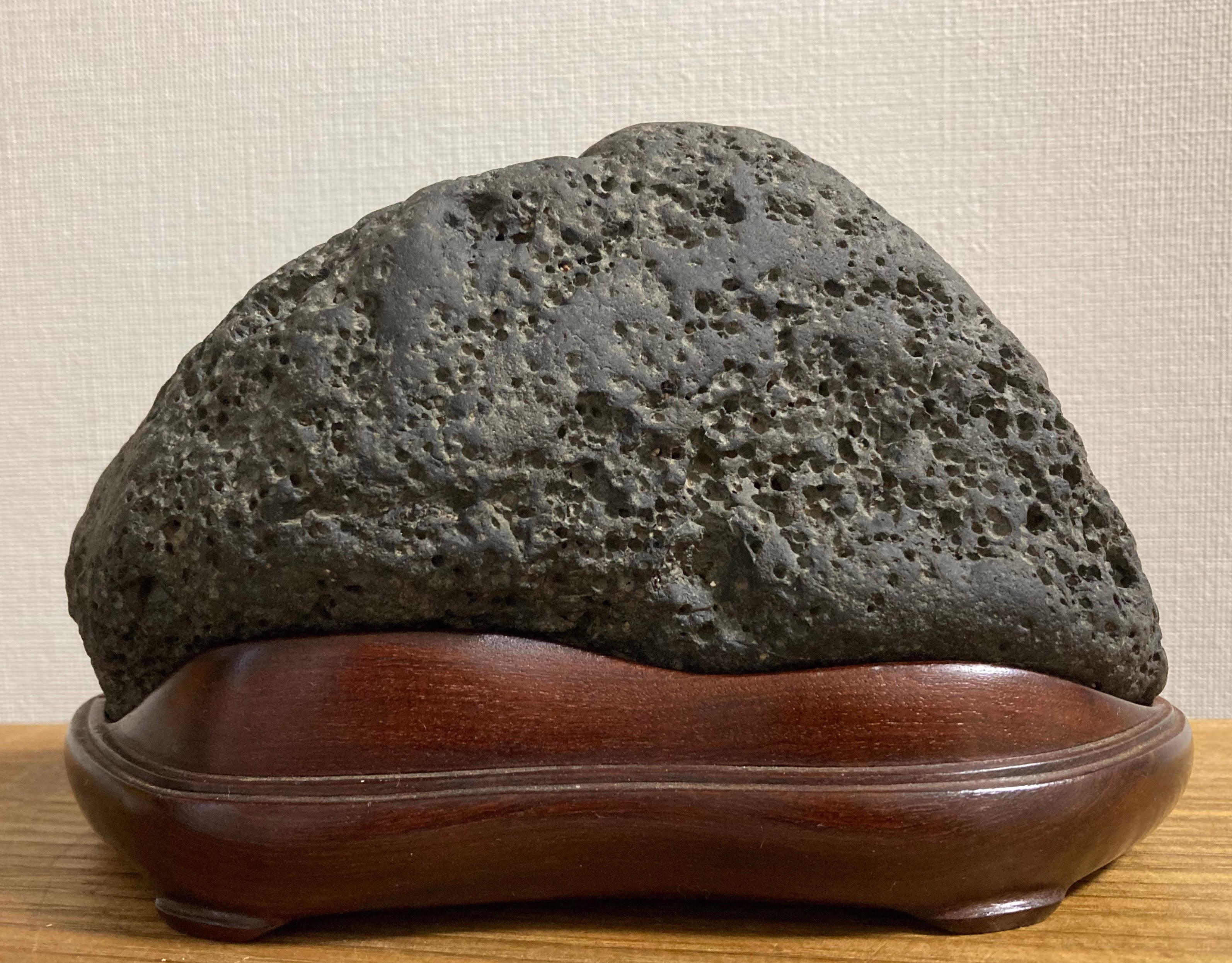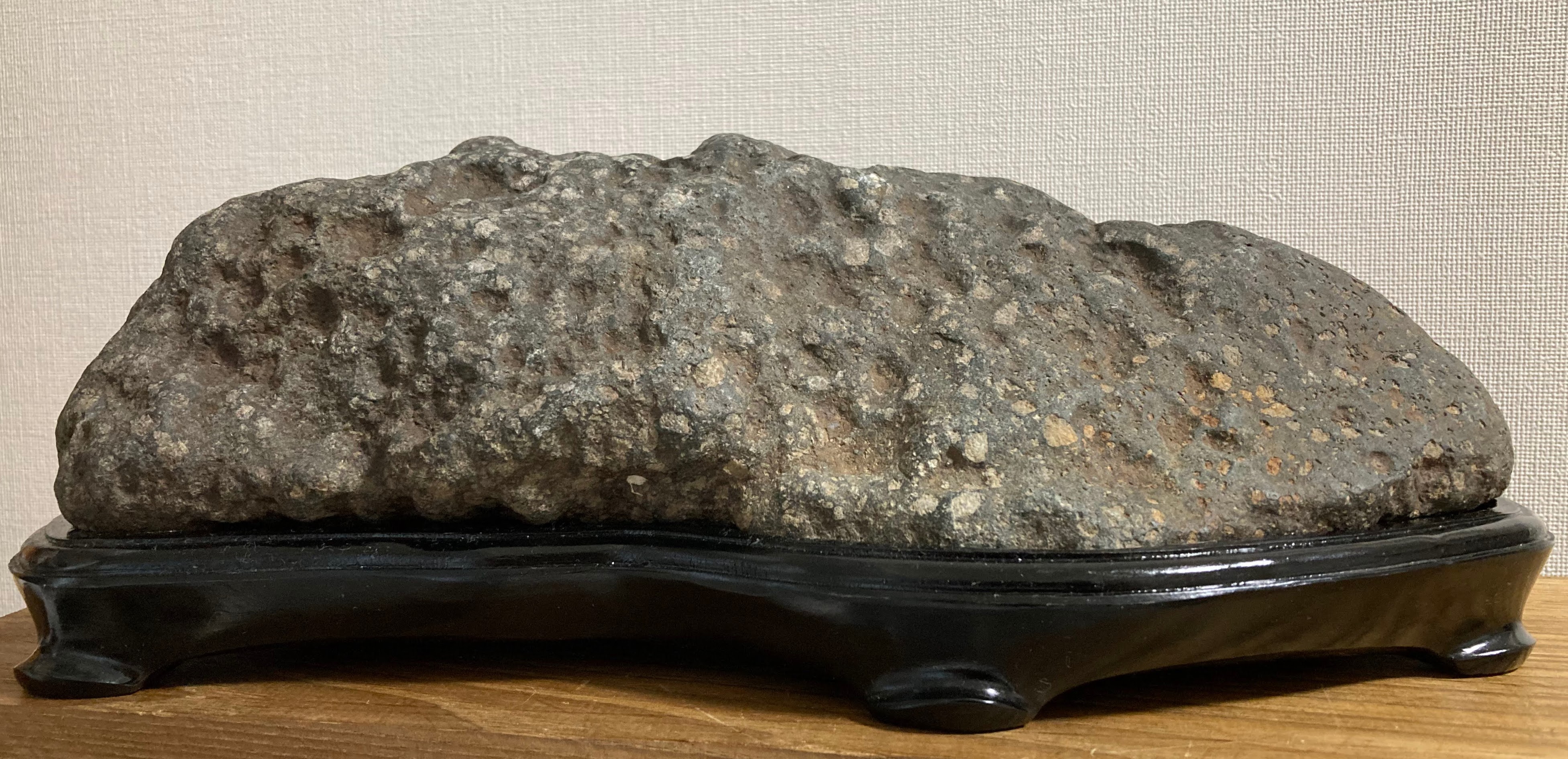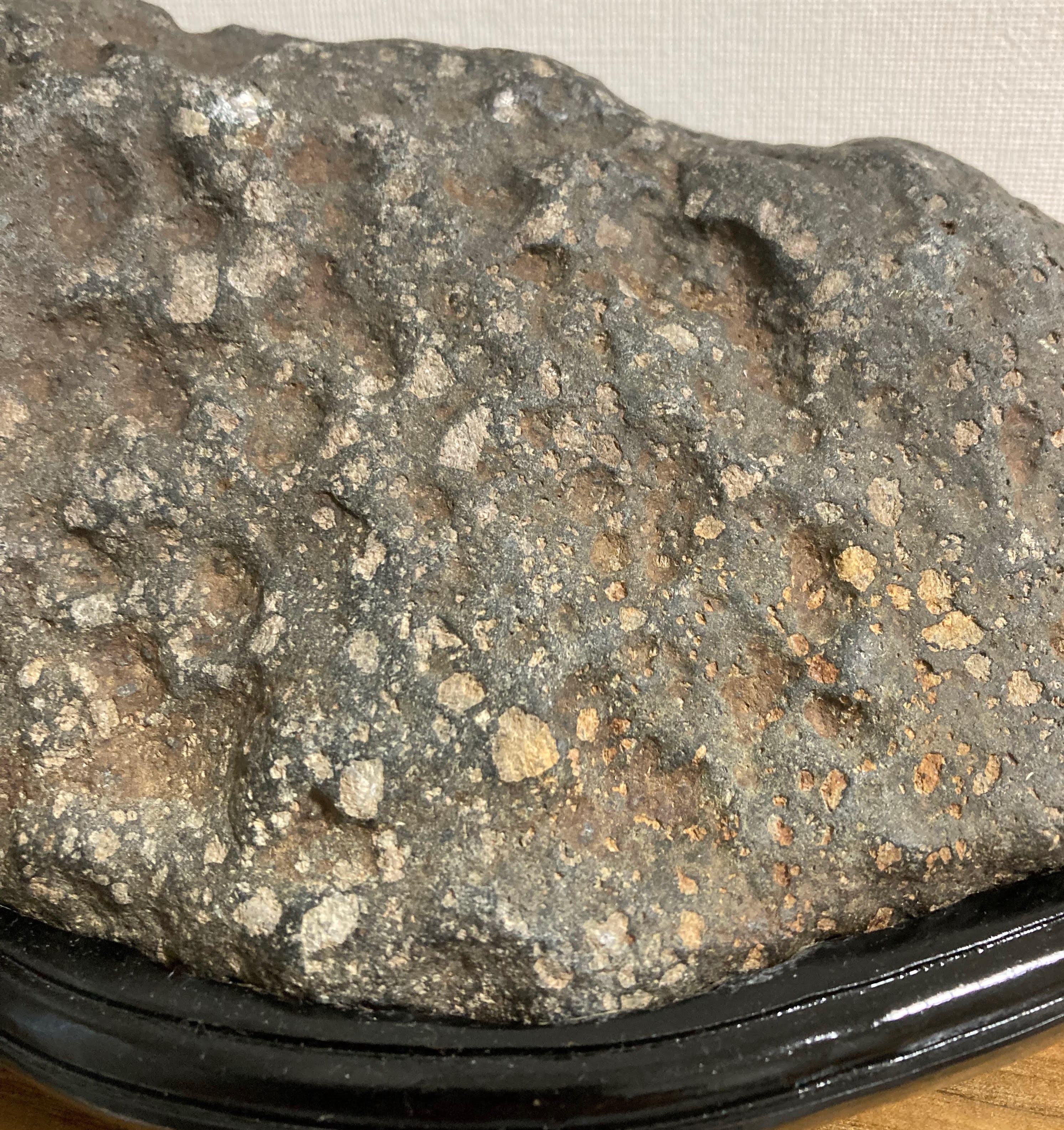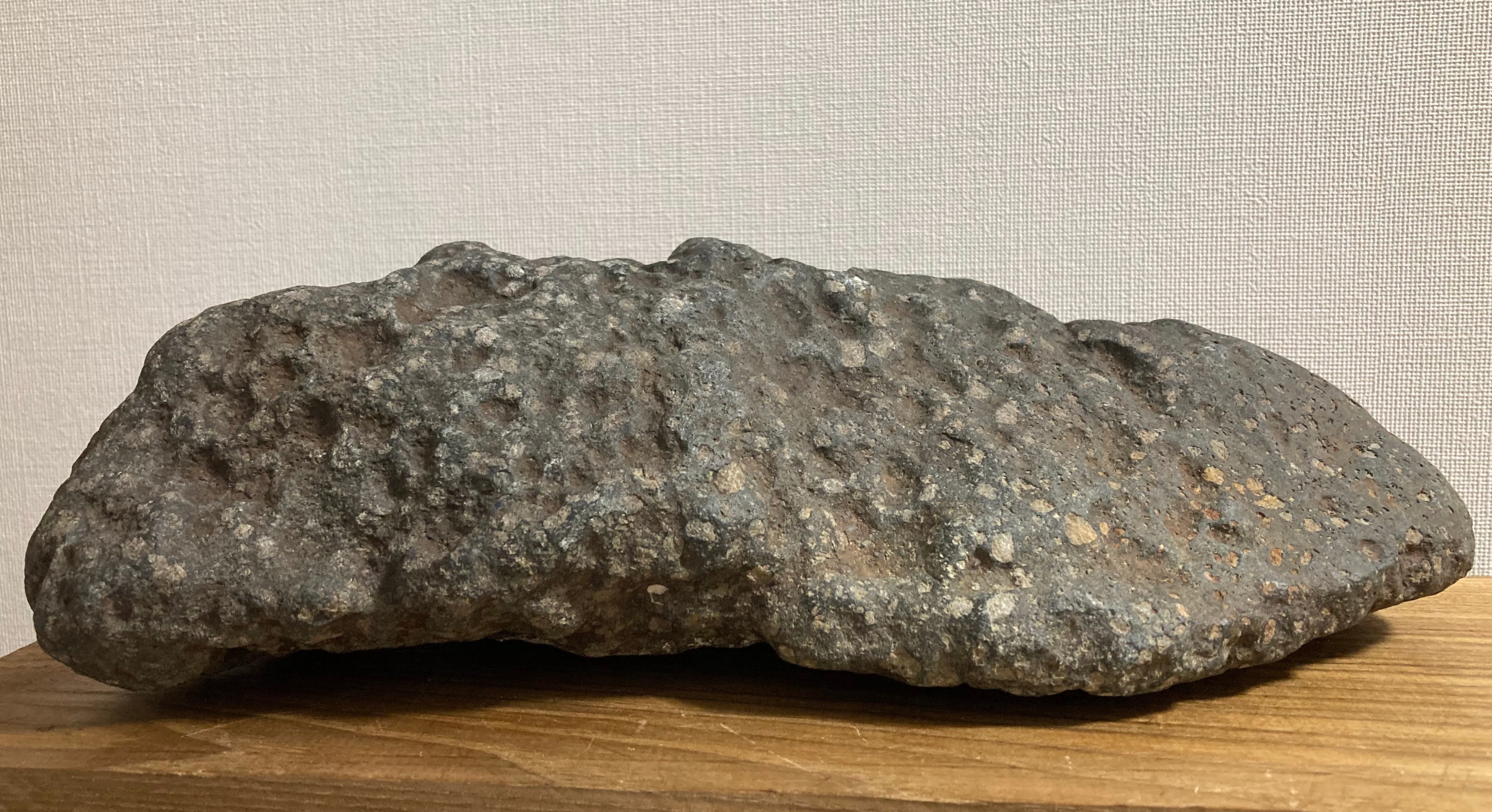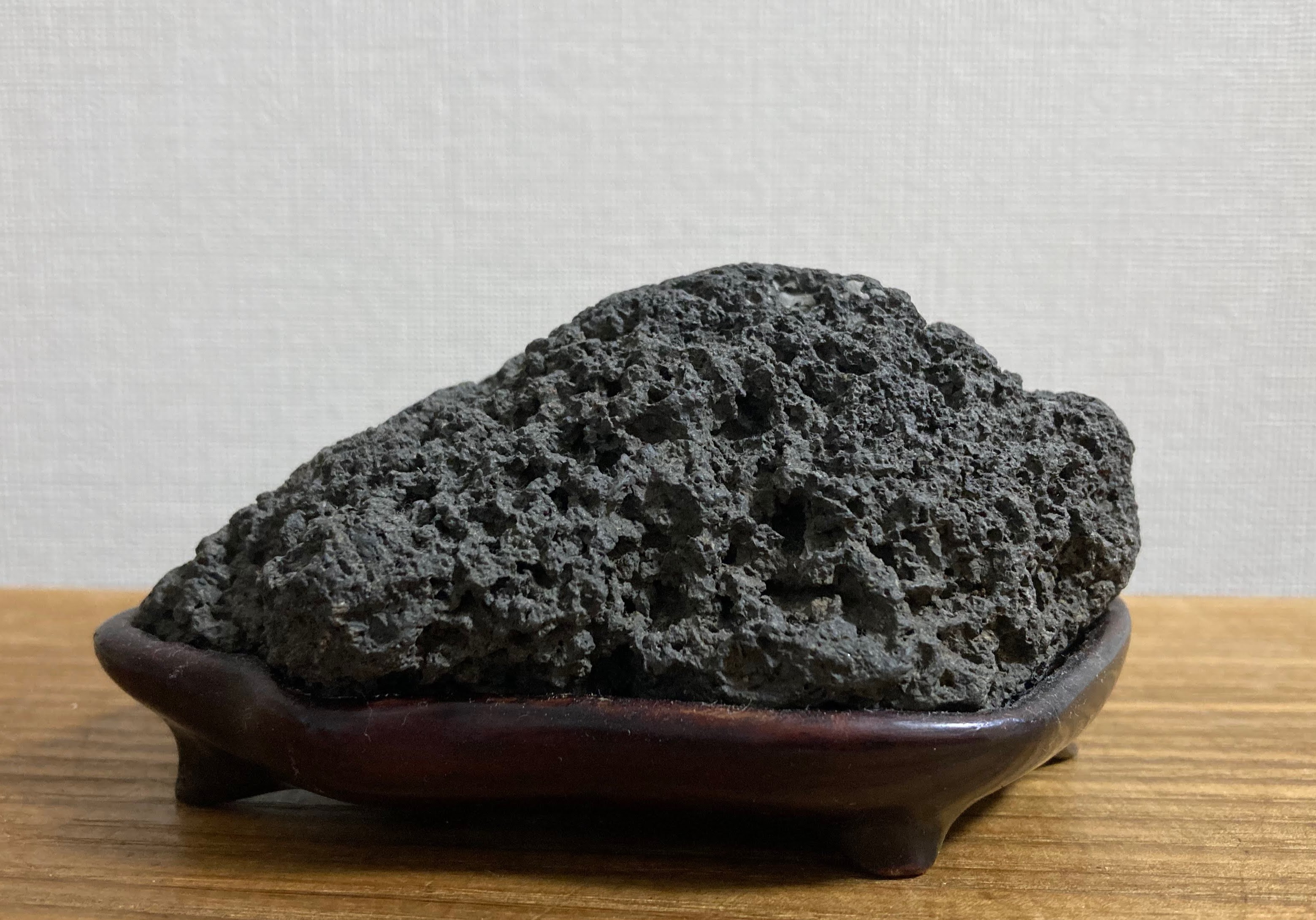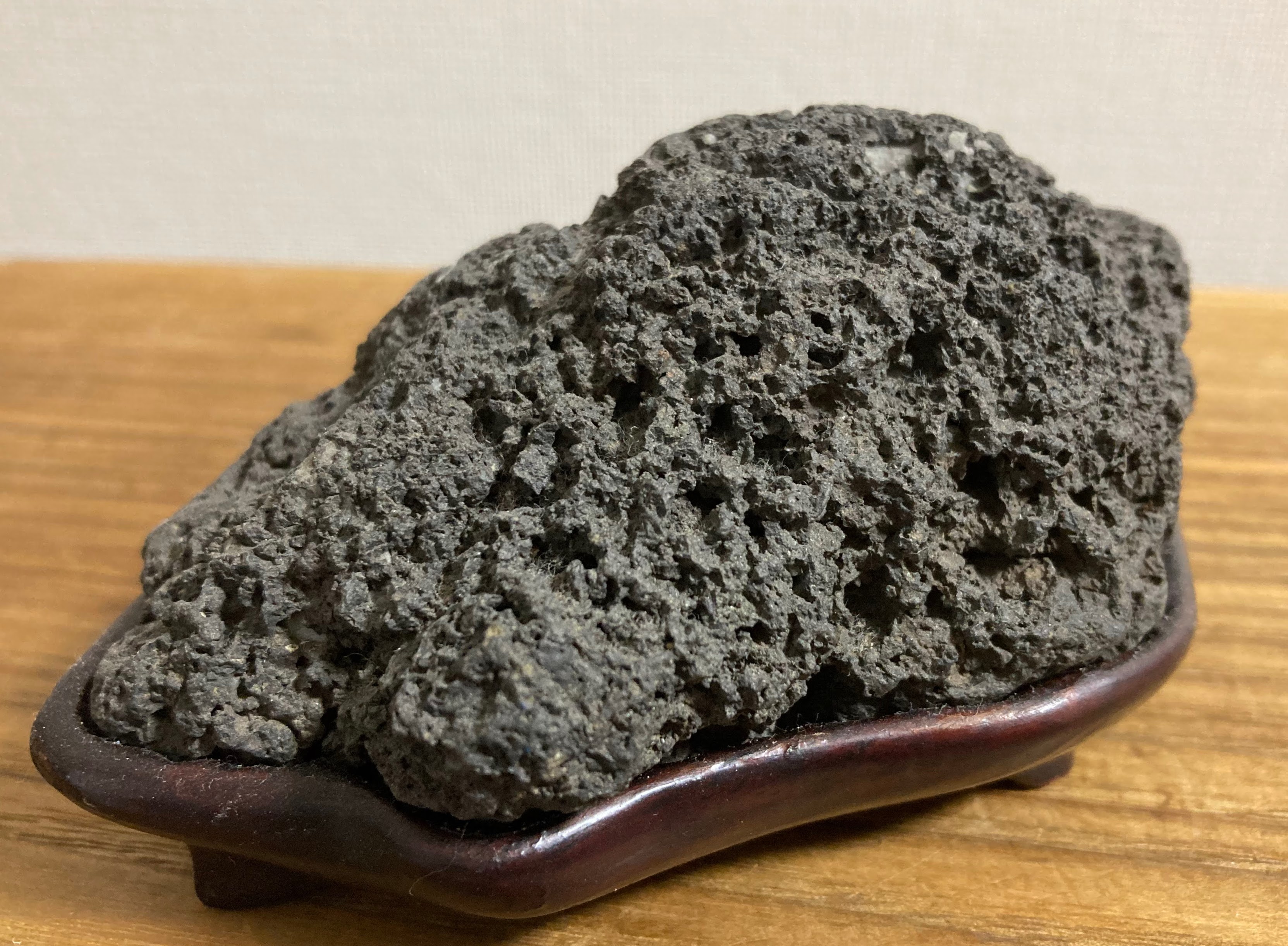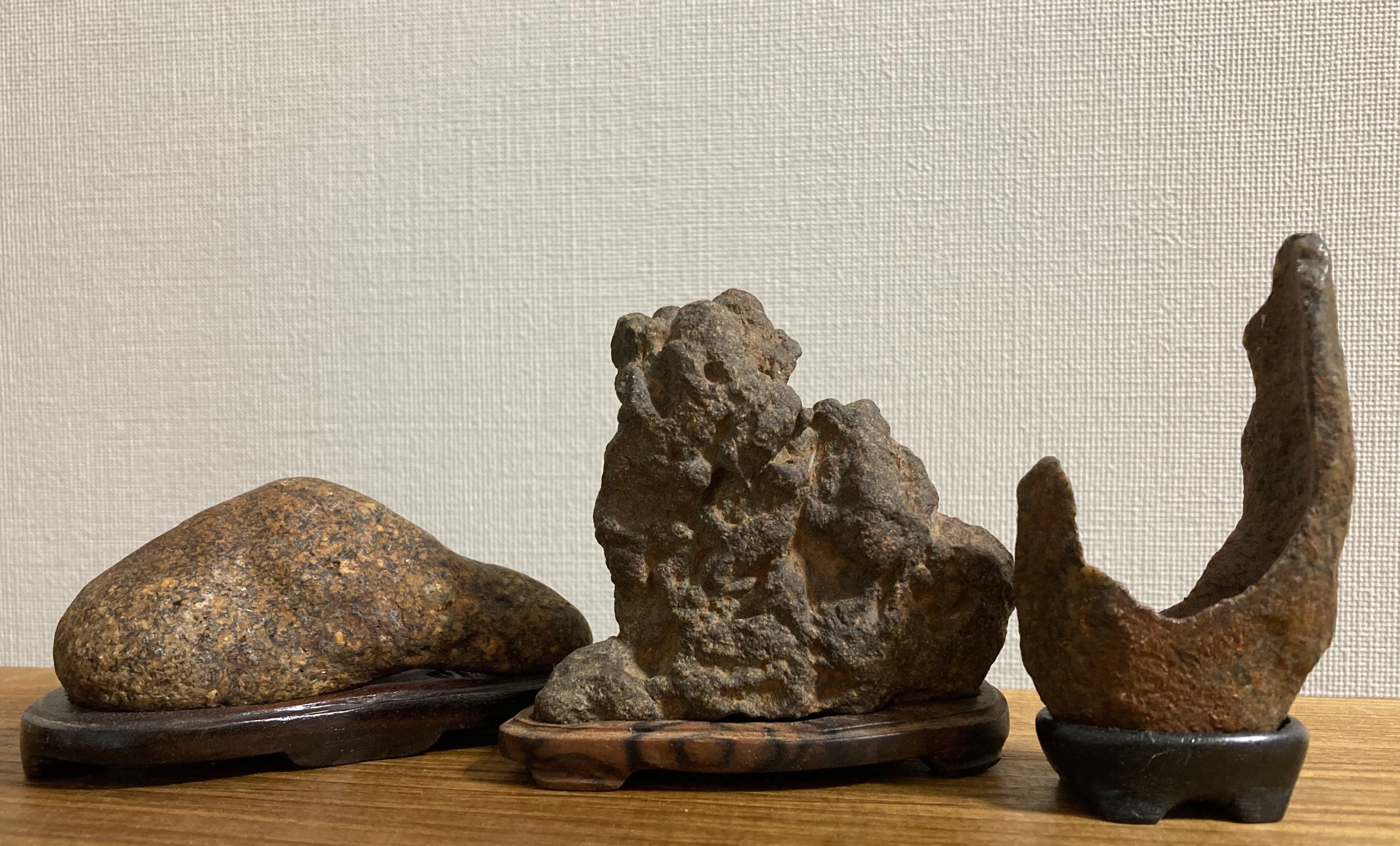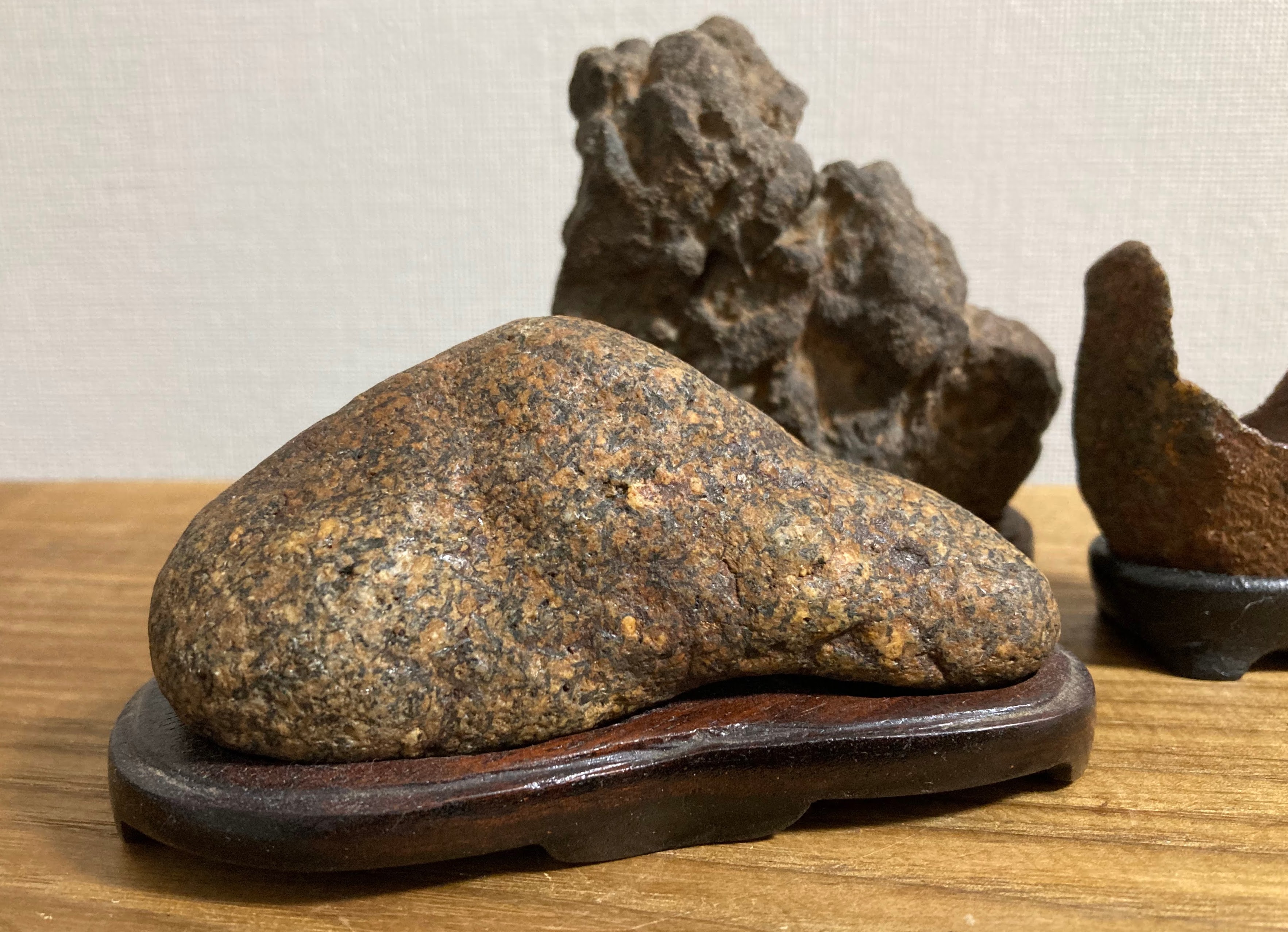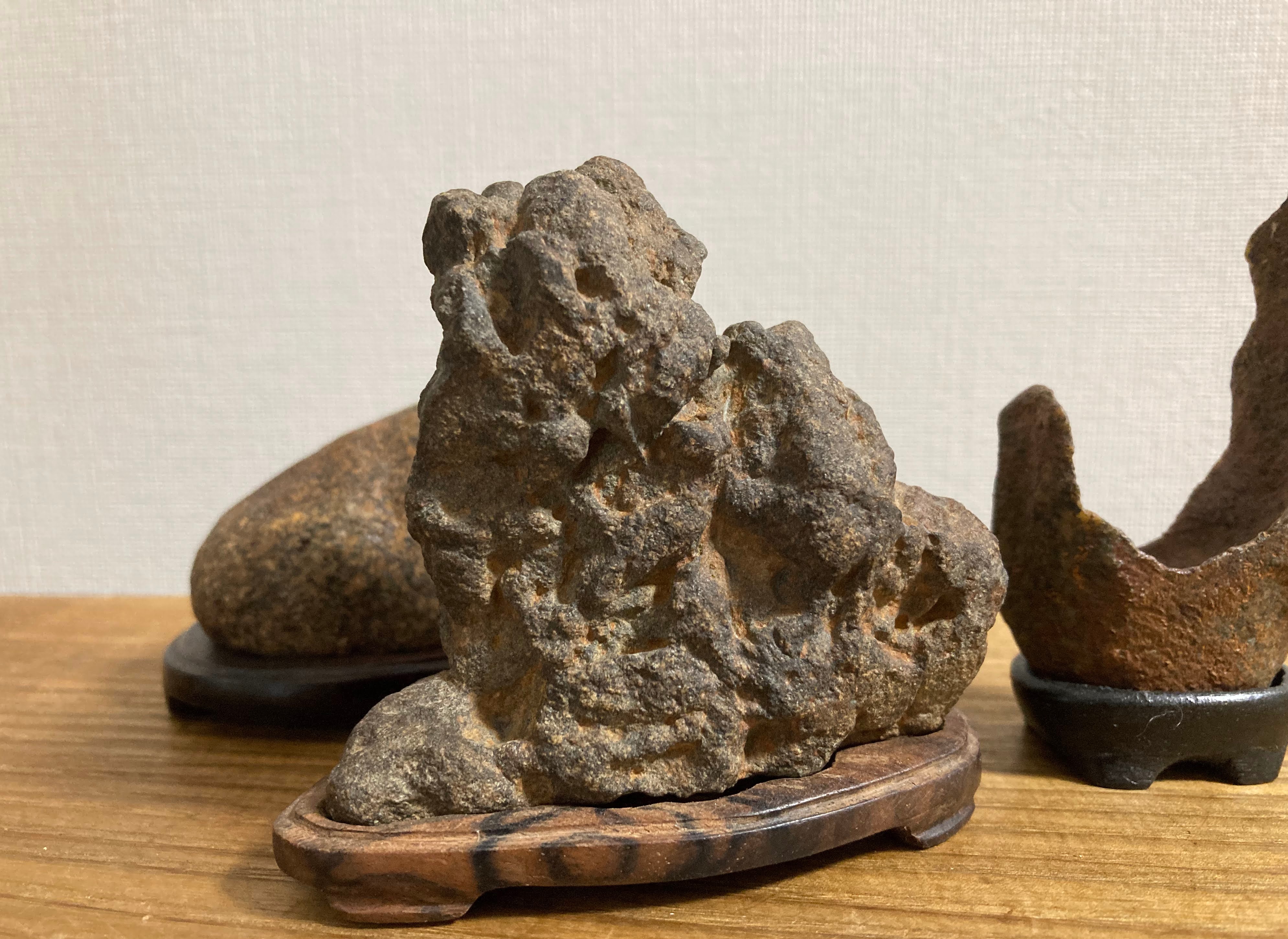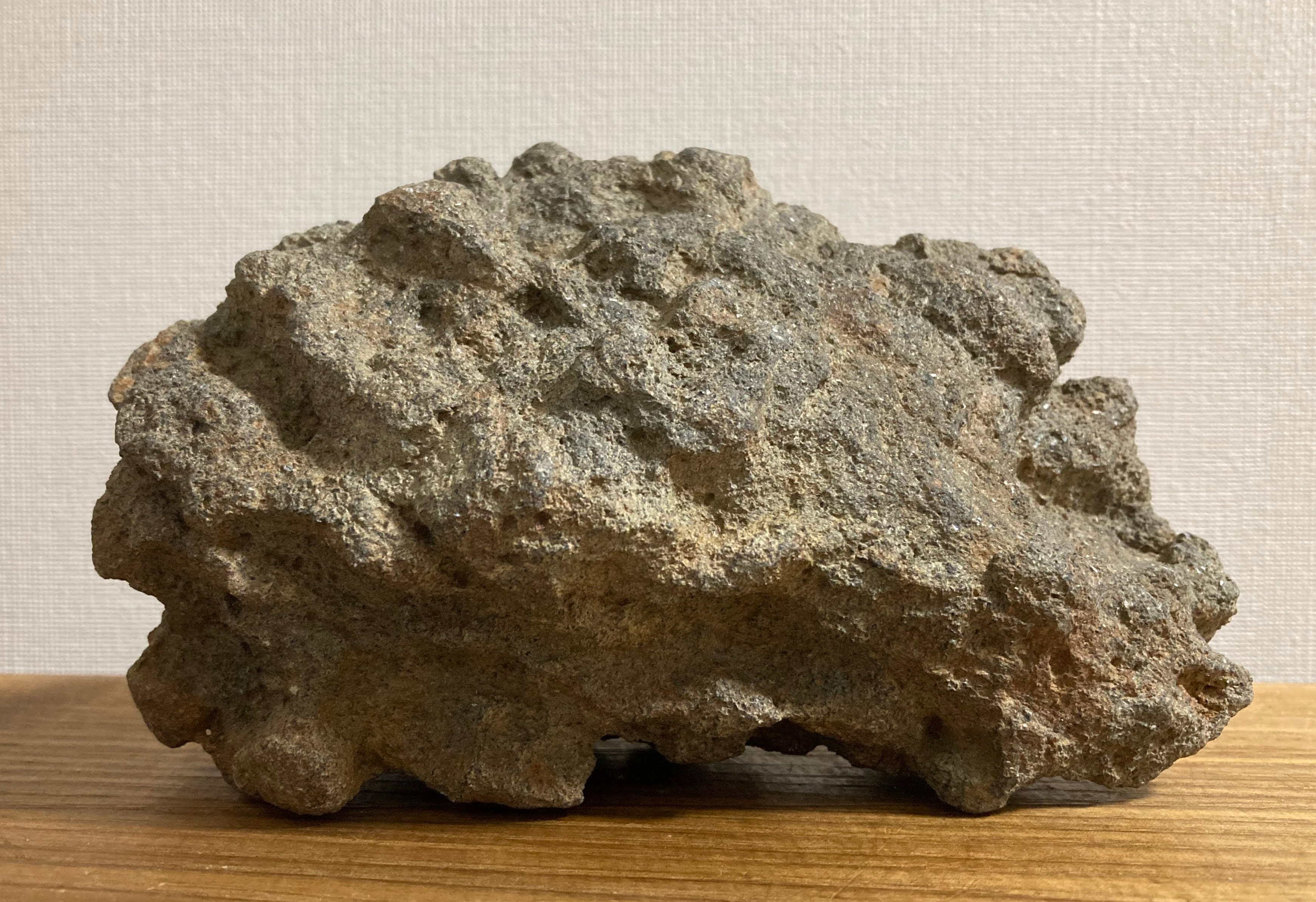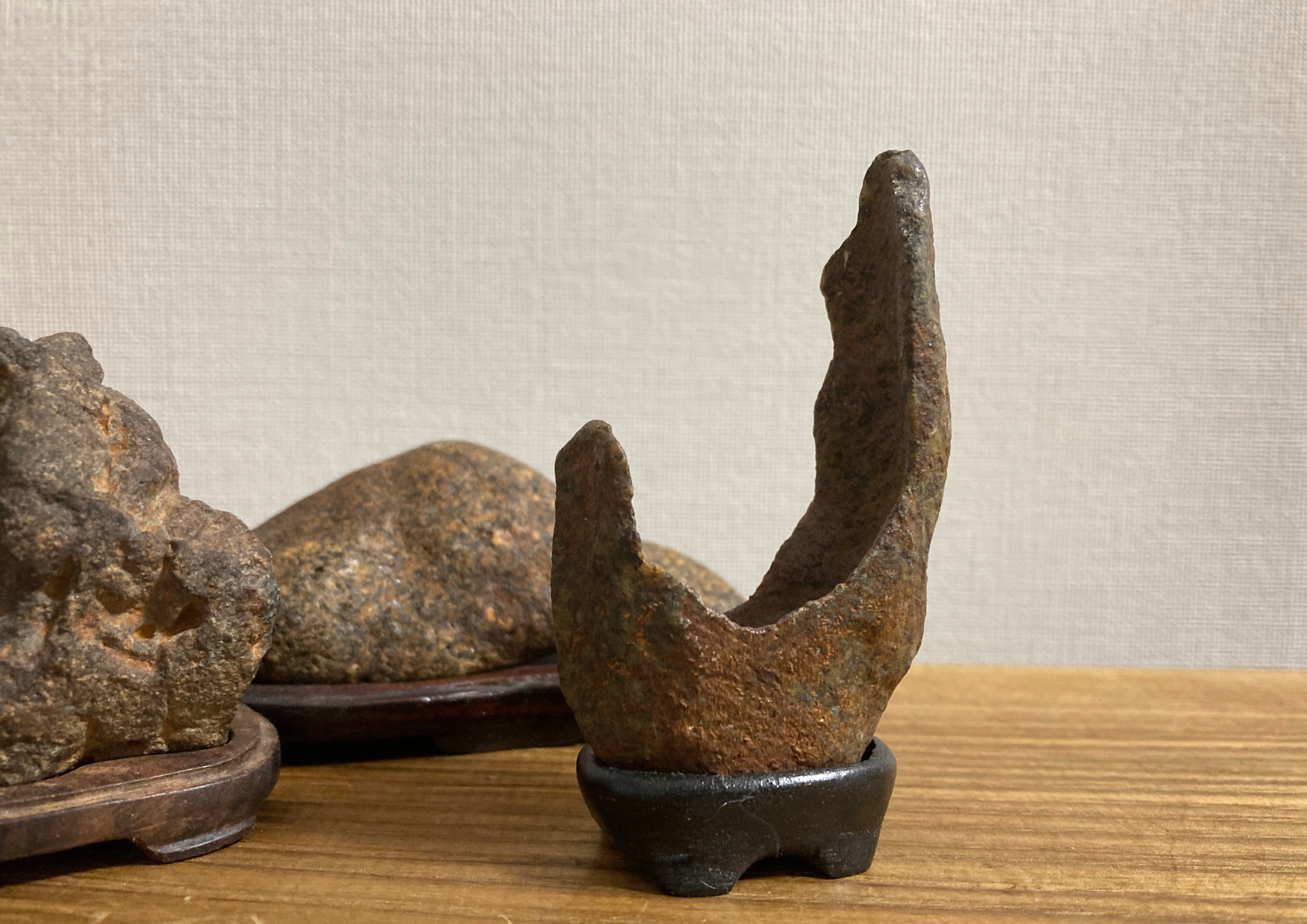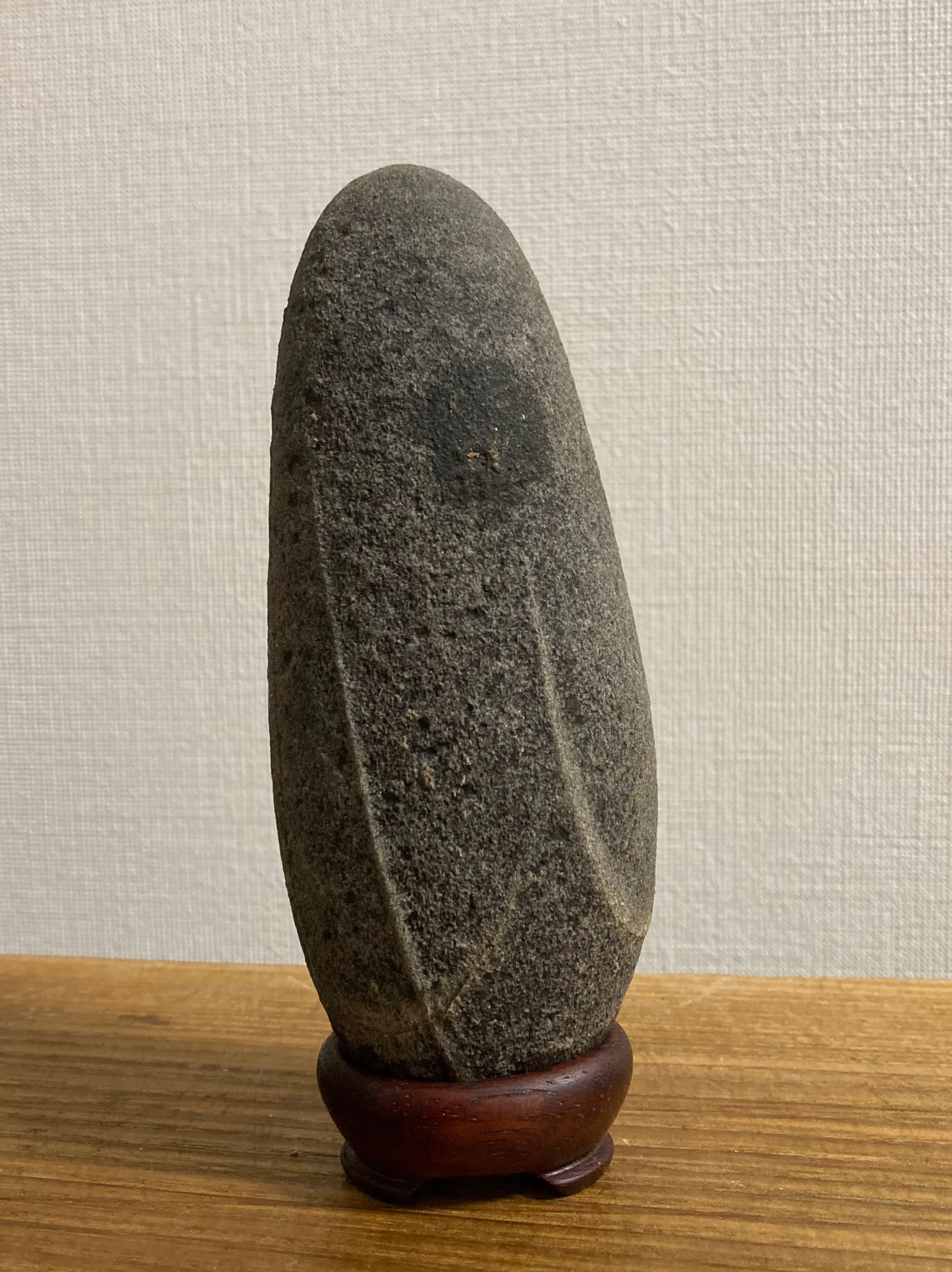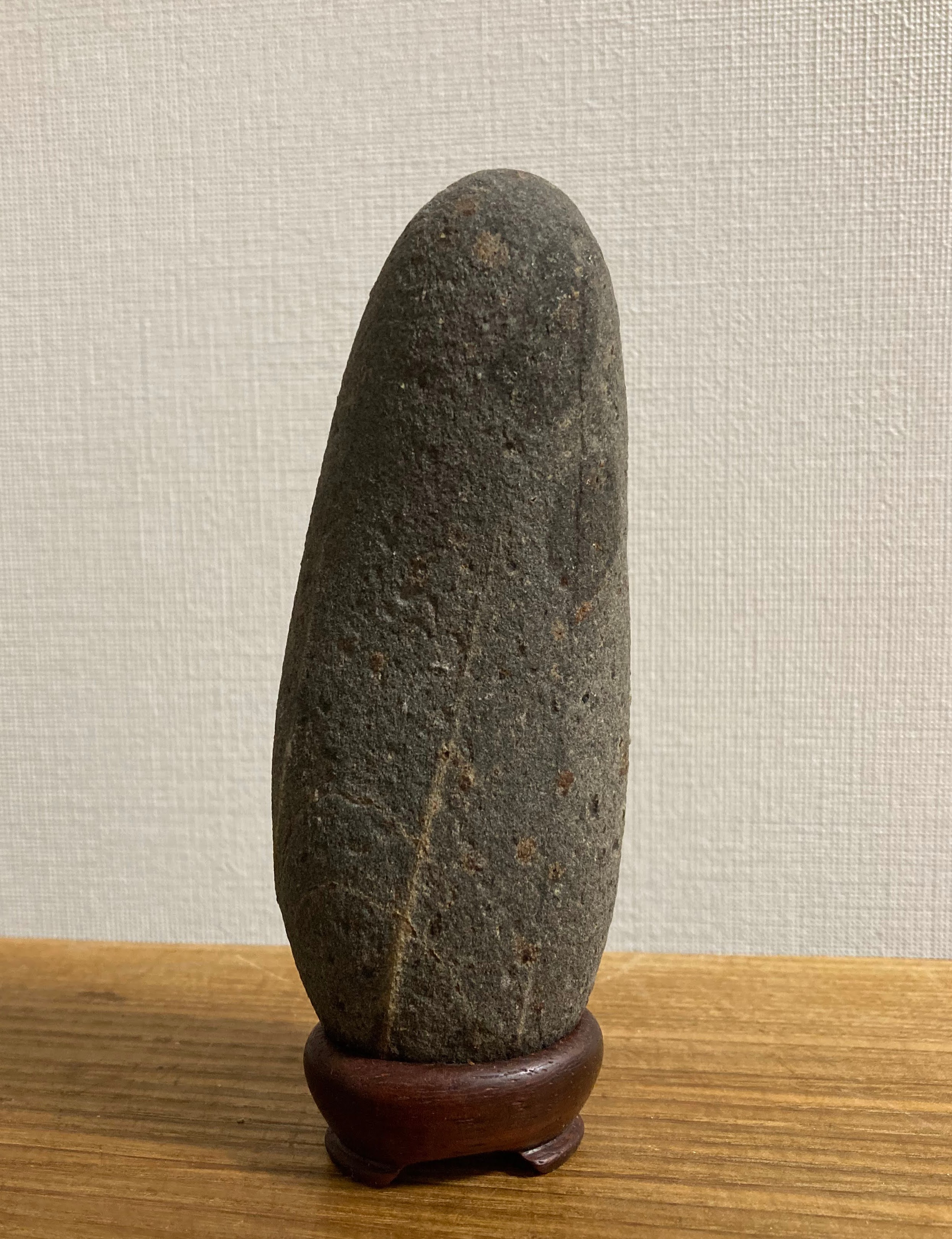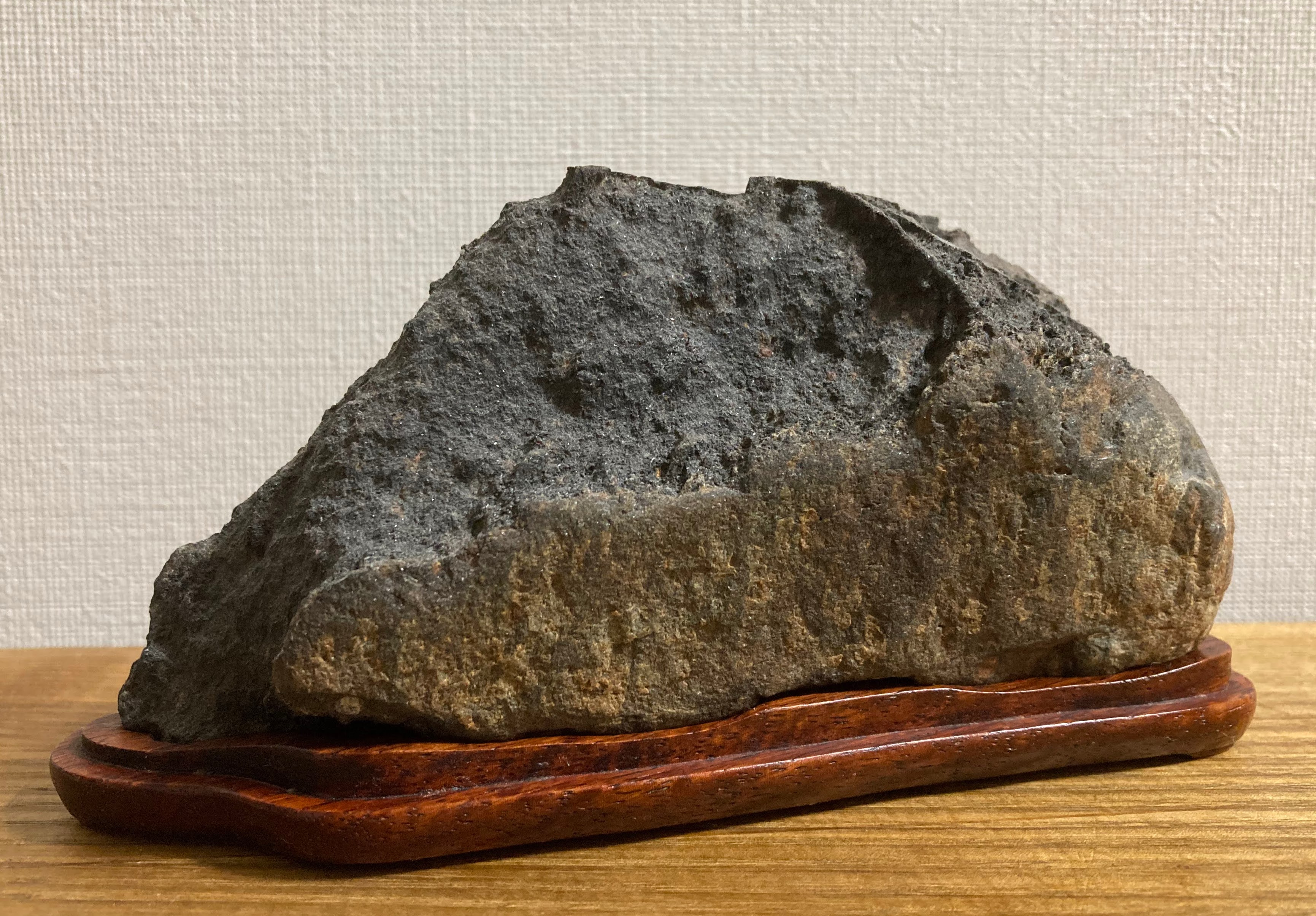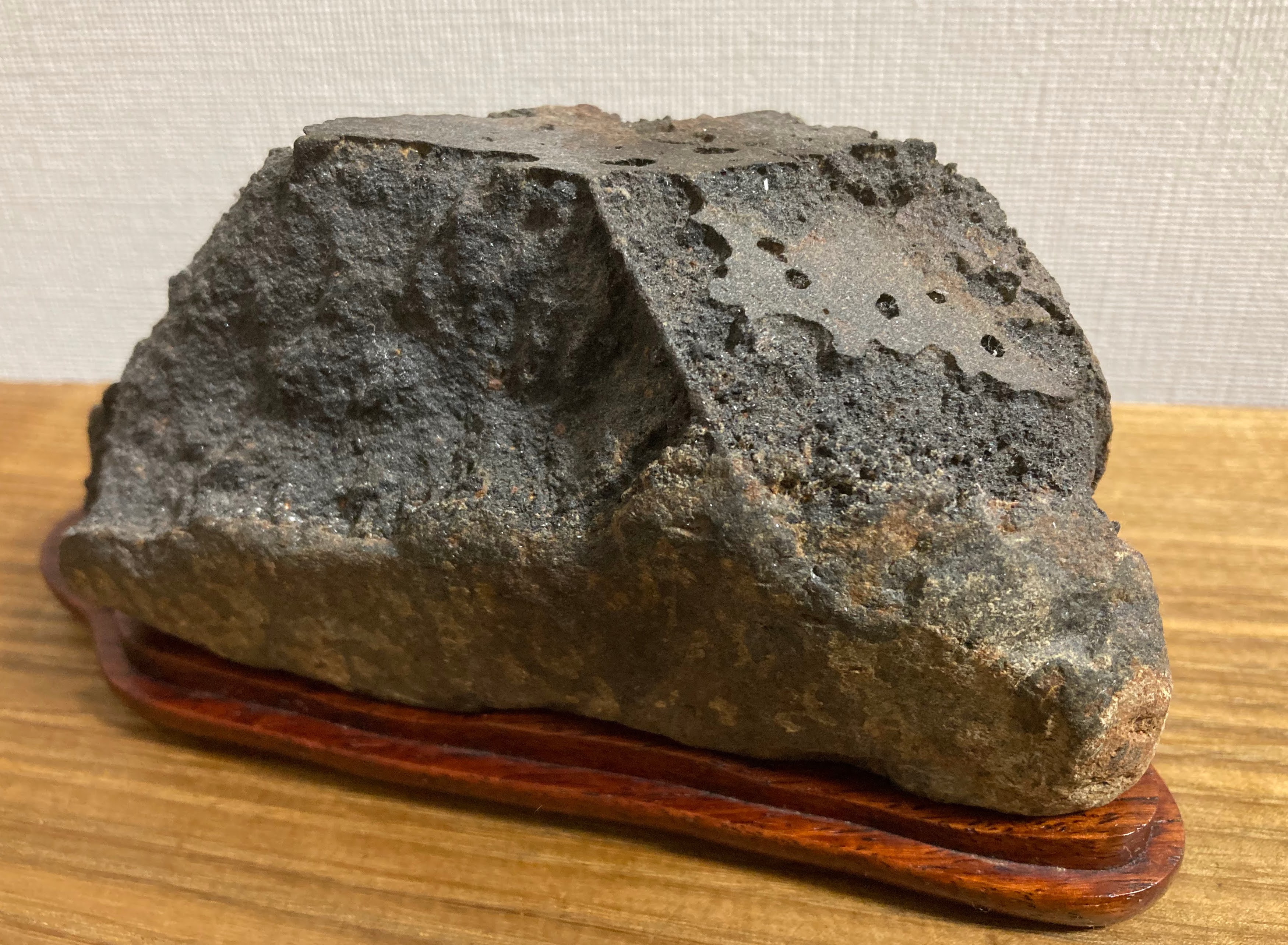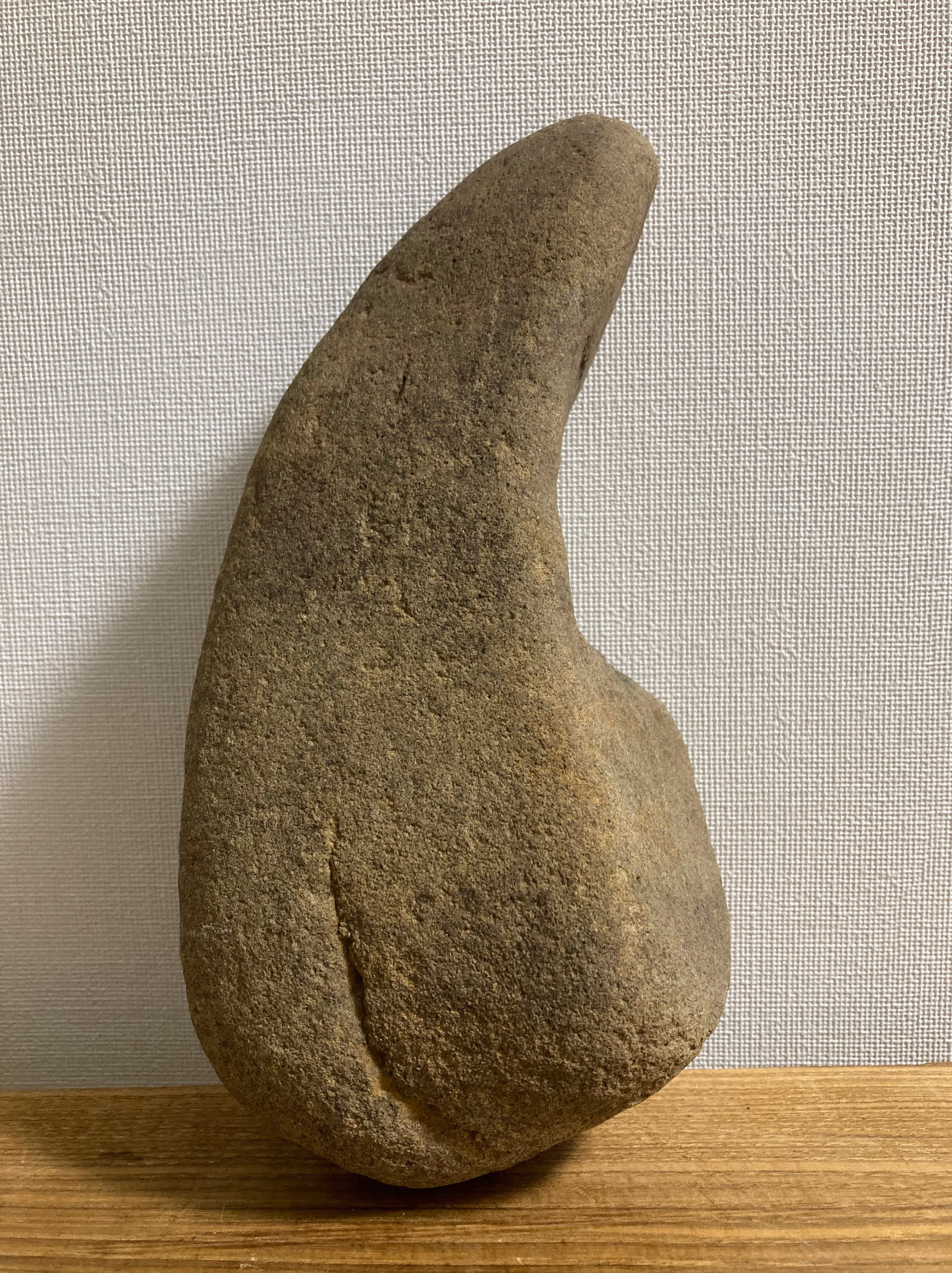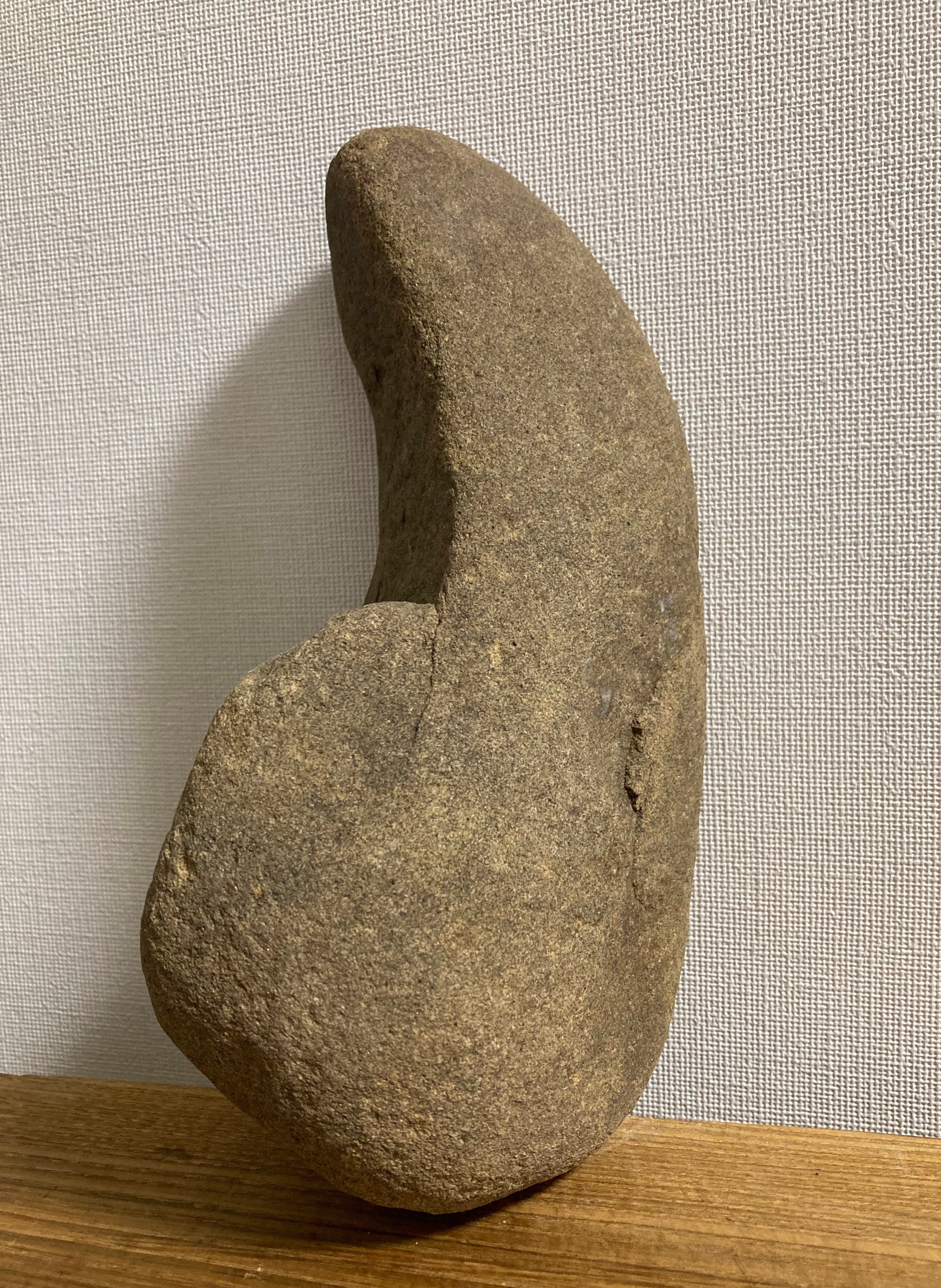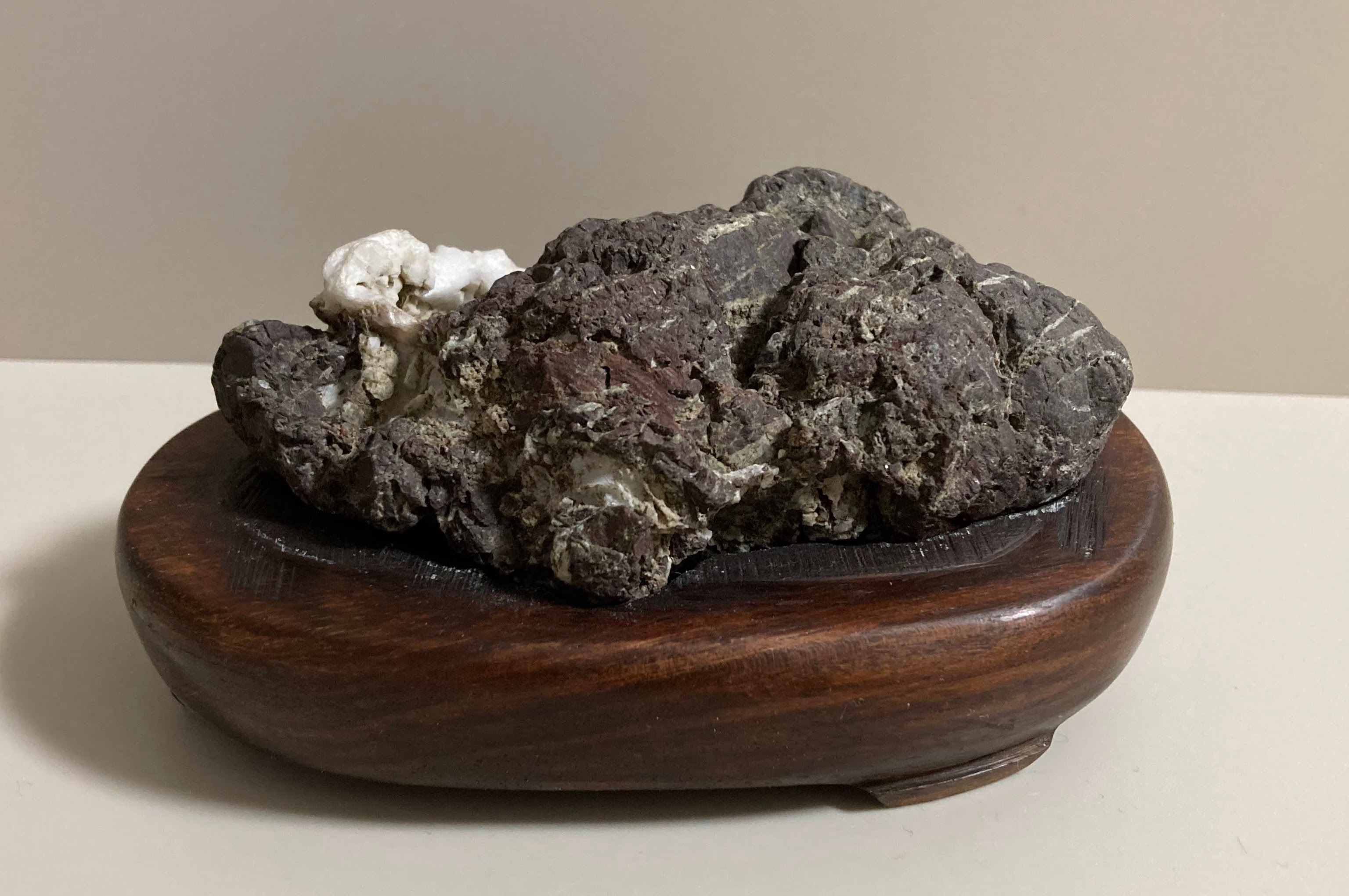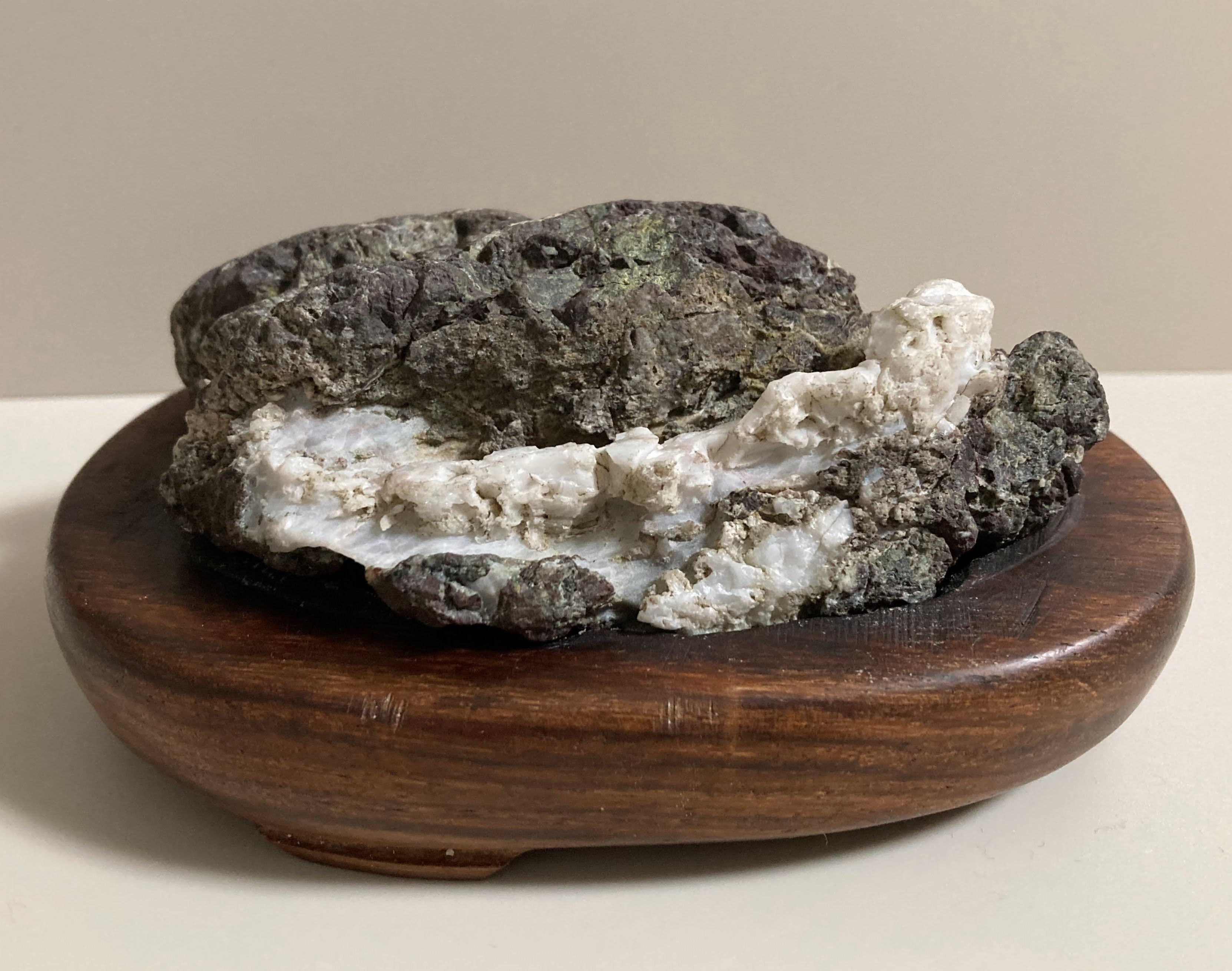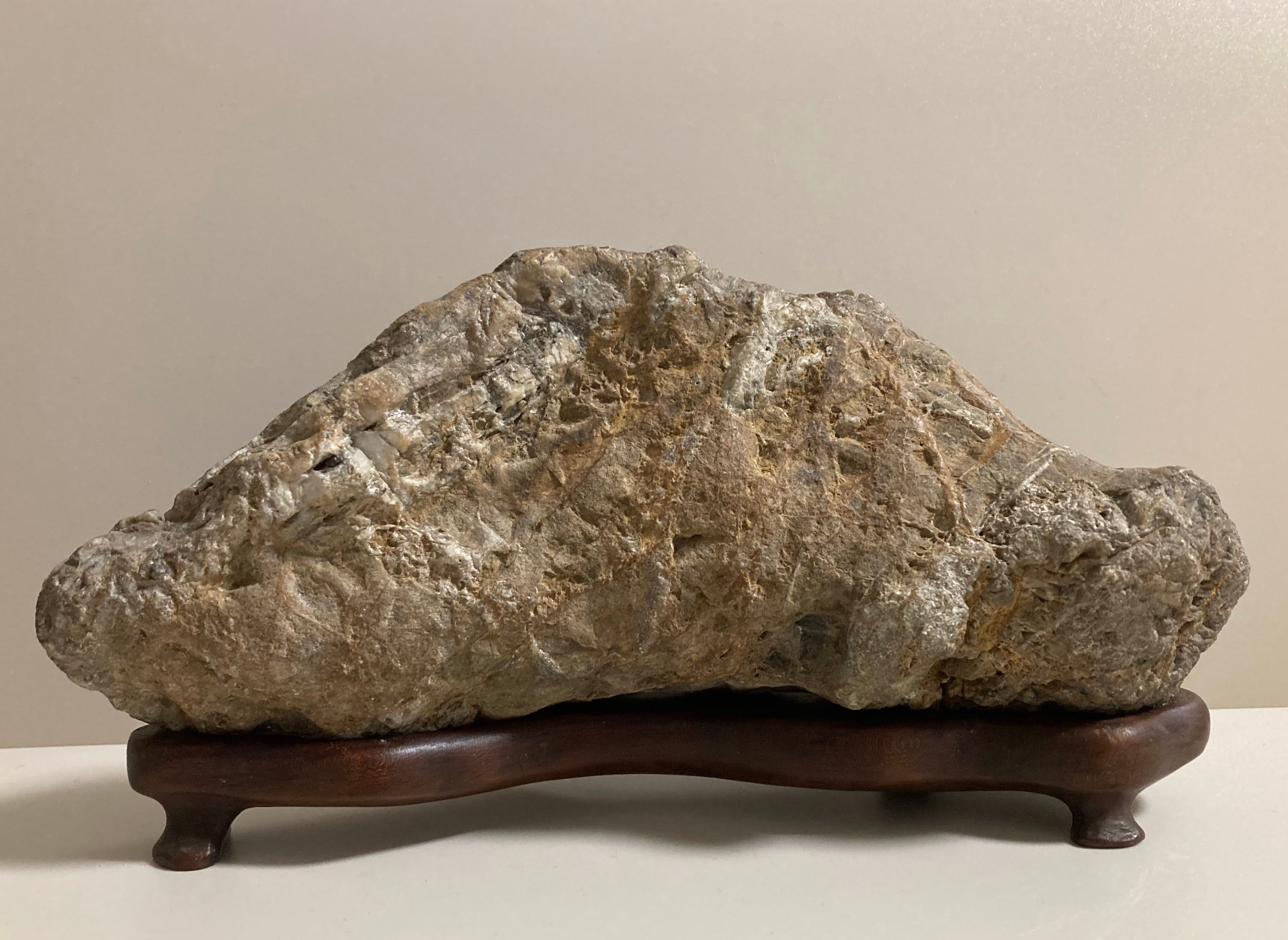Kamogawa-ishi-I, 加茂川石
Kamogawa-ishi
Kamogawa-ishi is a general term for stones from Kamogawa.
Since Kibune river, Kurama river, and Takano river, which are all famous rivers for Suiseki, are joined into Kamogawa, these stones are also called Kamogawa-ishi if found in Kamogawa.
Kamogawa is one of the big three rivers for Suiseki but it is generally regarded as the best because of its historical point of view. (By the way, the others are Setagawa and Sajigawa.)
Kamogawa-ishi is so famous in Suiseki and the big problem is a false designation of origin
Once Sengen-ishi from Hokkaido and Kotaki-ishi from Aomori were disguised as Kamogawa-ishi but the truth is stones from any place in Japan might be disguised.
So, if you see stones called Kamogawa-ishi, you should be careful.
Kamo seven stones
The upper reaches of the Kamogawa, there are several places which can be considered as an unexplored region and remarkable stone is found in each place.
Especially, Yase-ishi, Shizuhata-ishi, Kurama-ishi, Fuigooroshi-ishi, Kumogahata-ishi, BeniKamo-ishi, and etc., are called Kamo Seven Stones but as same as KamuiCotan Seven Stones and Kasuga Seven Stones, it should be an eulogistic name and there is no meaning to decide what the seven stones are.
I would like to introduce some Kamogawa-ishi’s as follows:
Yase-ishi, 八瀬石(やせいし)
In the upper reaches of Takanogawa, there is Yase Valley. There are several types of stones are found in Yase balley, such as, Yase maguro-ishi(true black), Yase sudachi maguro-ishi, Kamogawa beni nagashi-ishi(crimson flowing) and Yase yomogi-ishi.
Kamo Maguro-ishi, 加茂真黒石
This is Kamogawa-ishi.
It is my opinion that Kamogawa-ishi is more inhomogeneous than clayslate, Shimantogawa-ishi and more rough than Setagawa-ishi and it likes more general stone.
Kamo Maguro-ishi, 加茂真黒石
This is also Kamo Maguro-ish.
Its surface is rough Sudach but roundish by stream-flow, so originally, it seems to be Yase sudachi maguro-ishi.
In this case, the stream-flow is from Takanogawa through Kamogawa.
The wood base is good. The backside is lift-upped and the front face is at a perfect angle.
Kamogawa-ishi, Kurama-ishi(鞍馬石)
This is also obtained as Kamogawa-ishi. Its color is grayish and white spots and a lumpy surface can be observed.
Probably, some kind of Kurama-ishi was flown from Kuramagawa through Kamogawa.
There is a note in the wood base. Every stone has its own history.
It has a presence by its size and shape.
Yase sudachi maguro-ishi, 八瀬巣立真黒石
This is renowned Yase sudachi maguro-ishi. Although It looks like Sengen-ishi from its surface like lava stone, it is actually more fine.
You might think it is fragile, but not. It is hard enough.
Since some white limestone is left, this Sudachi was made by disappearing limestones by weathering
Shizuhata-ishi, 賎機石(しずはたいし)
All the stones found in the upstream of the Kamo River, the valley of the Shizuhara River are Shizuhara stones, but since they are mostly Itokake stone, the name of Shizuhata-ishi means Itokake stone. It is sometimes called the Shizuhataishi Itokake-ishi.
Kurama-ishi, 鞍馬石(くらまいし)
Kurama-ishi is Granodiorite from Kurama Valley and mountain quarries. It contains more iron than the granite that is distributed nationwide, and is characterized by its rusty color due to weathering.
It grows in an elliptical shape from the soil of the mountain, not in a bedrock shape. Those that have rounded corners in the river are highly rare and valuable.
Even though it is called Kurama, its range is vast, and there are differences in stone quality depending on the location.
They are classified according to stone quality, shape, and color, such as Hon Kurama (True Kurama), Kuro Kurama (Black Kurama), Kin Kurama (Gold Kurama), Oni Kurama (ogre Kurama), Kuri Kurama (chestnut Kurama), and Hime Kurama (princess Kurama).
In Kyoto, Kurama-ishi has been highly prized since ancient times as it is sometimes processed into tsukubai as kutsunugi-ishi, a stone that is placed at an entrance, or stepping stone. From left to right: Hon Kurama-ishi, Kin Kurama-ishi, and Kurama-ishi.
Hon Kurama-ishi is the authentic or true Kurama-ishi found in the land of Kurama, and it is called so in comparison with Tanba Kurama-ishi and Koshu Kurama-ishi.
Kurama-ishi is originally classified as ilmenite-series granite mineralogically, but granite itself is very common and can be found everywhere in Japan.
Kurama-ishi is generally granodiorite or quartz diorite in detail, but it contains a large amount of pyrrhotite and produces a unique rust color when oxidized.
This property is the reason why Kurama-ishi is highly valued, and Tanba Kurama-ishi and Koshu Kurama-ishi are famous as granites showing similar properties.
Therefore, it seems that the name Hon Kurama-ishi has been established to differentiate it from them.
This Kurama-ishi doesn't look so rusty in the photo, but it actually has a beautiful iron rust color.
It curls up on the whole with river slides, and the touch is perfect. This Kurama-ishi is my personal favorite because it is small but has variations.
This is Kin Kurama-ishi.
It is said to be characterized by its high mineral content, but its most distinctive feature is its shape, which looks like a collection of rugged small lumps.
Probably due to crushing, this is also a blackish rust color, and it is a particularly popular Kurama-ishi among other Kurama-ishi's.
This is the Soge of Kurama-ishi.
Cutting thinly is Sogu in Japanese, and Soge is derived from Kurama-ishi. The Soge of Kurama-ishi is most suitable for bonsai with stones, so it seems that many of them are artificially shaved.
Granite is a plutonic rock formed by slowly cooling and solidifying magma deep underground, and cracks called joints occur here and there.
Areas close to the joints are weathered, and peeling parts like the skin of an onion appear between them and the core. This is called onion-like weathering or globular weathering.
This onion-like skin is Soge-ishi, which is appreciated as Suiseki and used for bonsai with stones.
This is a Kuro Kurama-ishi and Kuro means black in Japanese.
It has a slightly rough texture, and if you look closely, you can see a tiny sparkle. It's called biotite, but I'm not sure. This stone is hard and has uneven patterns, which is quite interesting.
Furumichi Maguro-ishi, 古道真黒石(ふるみちまぐろいし)
It is also called Furumichi Kurama-ishi, a stone found from Furumichi-sawa in Hanase Pass. Black diorite that has undergone further metamorphic or weathering lithology.
This is Furumichi Maguro-ishi. very rigid and heavy. The texture is similar to Sajikawa-ishi, but it is finer than that and shines brightly depending on the angle.
It is a very good stone with a unique pattern, but unfortunately it is rarely found in the market.
Tanba Kurama-ishi for reference at the end of Kurama-ishi connection.
It is not possible to tell what kind of Tamba Kurama-ishi is from this one stone, but compared to Hon Kurama-ishi, the grains of the minerals contained are finer and more uniform, and it is like sandstone.
Kibune-ishi, 貴船石(きぶねいし)
It is a diagenous tuff from the Kibune River, and there are variations such as blue to purple mugwort and gray, but purple Kibune-ishi is especially prized.
Murasaki (purple) Kibune-ishi is famous as a garden stone, and its texture resembles that of weathered chert, giving it a rock-like feel.
A small but impressive stone that looks like a sea of ??clouds rising from the foot of a mountain.
Next is Kibune Itokake-ishi.
Even though it is called Kibune-ishi, there are variations such as Murasaki (purple) Kibune-ishi, Kibune Yomogi (mugwort) -ishi, Kibune five-colored stone, and Kibune itokake-ishi. Itokake-ishi is also produced in other places, such as the Niyodo River, but Kibune Itokake-ishi seems to be particularly famous and popular among suiseki.
These stones are considered to be in the soft category of suiseki, but their complex texture is interesting.
Fuigooroshi-ishi, 畚下石(ふごおろしいし)
Mountain stones from between Kurama and Kibune. The chert with a band of limestone is called "Hairyugan" and is prized.
Kumogahata-ishi, 雲ヶ畑石(くもがはたいし)
Chert from Kumogahata. Also called Hata-ishi. Chert that is not bright red, such as Benikamoishi, is reddish brown or close to brown.
Benigamo-ishi, 紅加茂石(べにがもいし)
Bright red chart. mixed with white quartz.
It should be noted that the Kamo River is difficult to find at first visit, as it is necessary to consider local regulations and the sentiments of neighboring residents as it is located near Kyoto.
It will be necessary to receive support from local stone enthusiasts. I can only hope that Suiseki culture will be widely recognized in the future.


